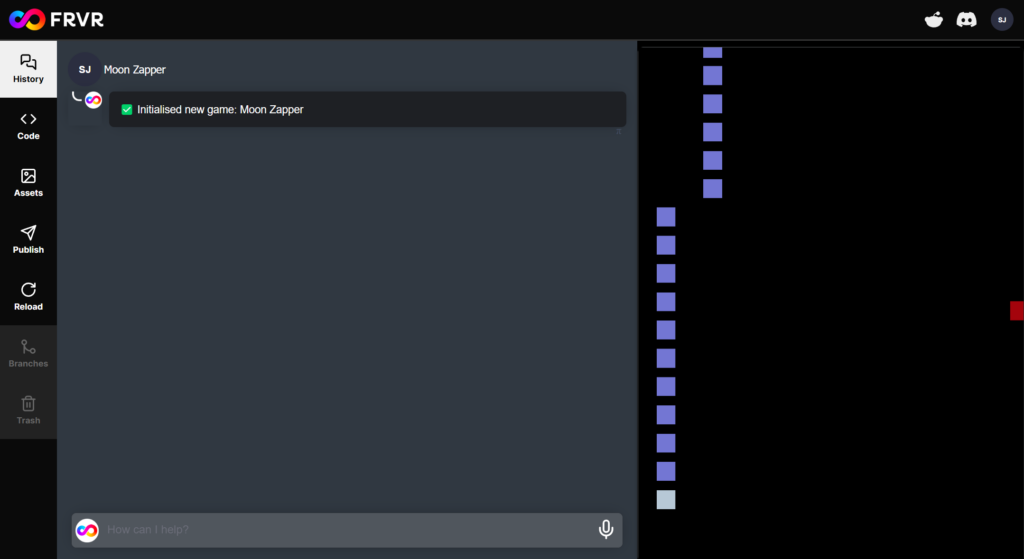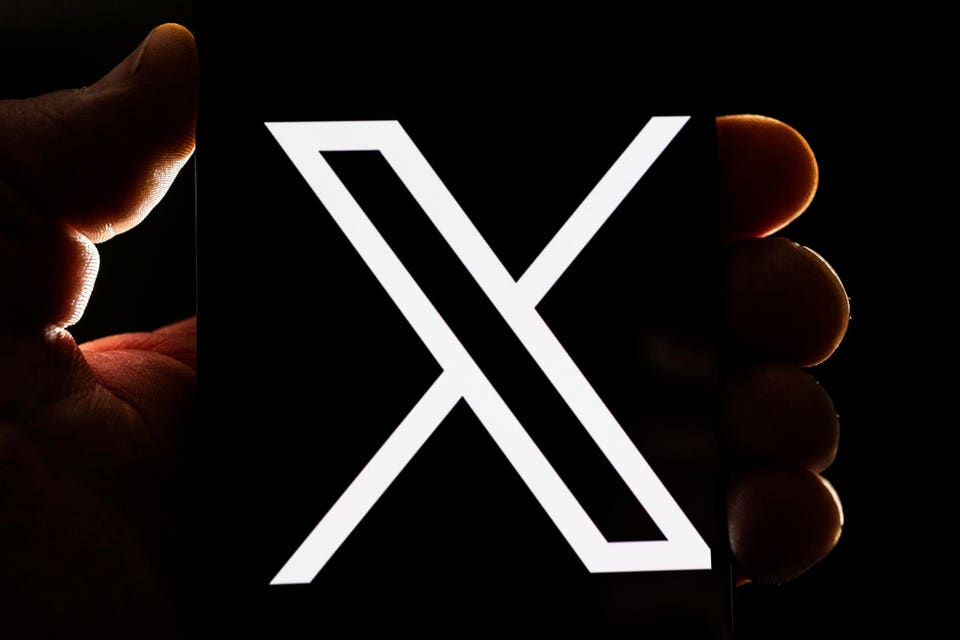Imagine a world where anyone, regardless of their technical skills, could create the video game they want to play – and not those dictated to them by major game studios
That world might be closer than you think, thanks to FRVR.ai, a cutting-edge platform that harnesses generative AI to streamline game creation, including code, art, and audio.
In this interview, Sam Jeans from DailyAI speaks with Chris Benjaminsen, co-founder and Director of Channels at FRVR.
Benjaminsen, a veteran of the games industry with over 20 years of experience, shares his vision for a future where game development is accessible to all.
But first, here’s a little background to FRVR.
Who is FRVR, and what do they do?
Co-founded in 2014 by industry veterans Chris Benjaminsen and Brian Meidell, FRVR emerged with a vision to revolutionize how people access and enjoy games.
FRVR is on a mission to democratize game distribution, tearing down the barriers that once stood between players and the games they love.
In Benjaminsens’s words, “Rather than having very few people decide what games people should be allowed to play, we want to allow anyone to create whatever they want and then let the users figure out what is fun. I don’t believe most of the games industry knows what people want. They just care about what they can make the most money on.”
FRVR flips the gaming industry on its head, enabling creators to build the gaming experiences they want rather than have them dictated by studios.
Games created with FRVR have been accessed by 1.5 billion players worldwide, with some 100 million monthly users and counting.
You can access FRVR.ai’s public beta and start creating your very own games for free here.
FRVR is also running a creator’s contest with a monthly prize pool of $2500!
How FRVR AI works
FRVR’s AI games creation platform allows anyone to create games simply by interacting with AI using natural language.
The process is simple: users input a description of the game they want to create, and FRVR’s AI system generates the game’s basic structure, including classes, game logic, and default assets.
Users can then iterate on the game by playing it, providing further instructions to refine gameplay elements, and letting the AI implement the changes.
FRVR’s editor is cloud-based, making it accessible from various devices. It consists of an input field for communicating with the AI, a live preview to playtest the current version of the game, a history tab to view and modify previous iterations, and a code tab.
You can also generate and integrate graphical assets, like backgrounds and environment features, in-game objects, etc, using AI.
FRVR recently added audio to the platform, enabling the generation of sound effects and backing tracks.
Publishing, sharing, and monetizing FRVR games is also straightforward. With the click of a button, users can share their creations across more than 30 channels, including the web, mobile app stores, social media platforms, and even newer platforms like smart TVs and cars.
Chris created an excellent tutorial on how FRVR.ai works here.
Now, without further ado, let’s dive into the interview.
Q: Tell me about how FRVR can shape the future of game design
Benjaminsen: “I don’t think the world has had truly user-generated games yet. We’ve had user-generated games platforms where people were generating UGC, but it’s always been limited with some of the capabilities that whatever platform supported, right? If you have a platform with a bunch of templates for puzzle games, you get a bunch of puzzle games, but you can’t create unique games on any platform that just supports templates. I think that AI can change everything.”
*Chris opens FRVR and demonstrates a game live.*
“Here’s a simple 2D space shooter game. And in itself, it’s not impressive at all. Although, like 20-something years ago, when I started in the games industry, this could have taken a small team a few days to go into. But today, somebody in Unity could bang this out in an afternoon, or you can use an AI tool like ours, and you can do it in around eight minutes by talking to it.”
“The experience we’re trying to create gives everybody the feeling that they have an entire team working for them. It’s different from what you see in music, video, or images in that we’re trying to create an environment for iterative development.”
“So, if you go to Midjourney and make a prompt, you try again if you don’t get what you want. But it’s very inefficient, and it doesn’t work if you want to build something of a deeper complexity. With deeper complexity, you need to be able to say, I have a state, and I want to modify it. So that’s what we focused on building.”
“So, for instance, here, we can say, “Make this ship twice as fast.” A lot of stuff happens in the background – we’re doing this live – you know, it’s not perfect immediately, but you can see that it works.”
https://dailyai.com/wp-content/uploads/2024/05/BENTUTORIAL.mp4
“Today, people are talking about multi-agency AI, you have AI interacting with AI, multiple layers working together, and we have something that’s not exactly that, but it’s similar to that, where we use AI to instruct AI to do complex tasks with AI. It’s almost recursive in nature.”
“So we can go in here and say, “Add power-ups to the game that make the ship shoot two bullets side by side for five seconds.” That’s a complex thing to do. So, the system has to make a plan. Then, it has to execute that plan. And what it’s doing here is rewriting the game’s source code. It’s not modifying a template, it’s doing the same thing that I would be doing as a game developer.”
“That means that the complexity of the games you can create is only limited by three things. It’s limited by the engine and infrastructure you have given to the AI, the capabilities of the AI, typically the context size, and then the ability of an individual user to describe what they want.”
Q: So FRVR combines a series of pre-made models – wrappers?
Benjaminsen: “Yes. And I want to be 100% clear here: we are not like a foundational AI company. We don’t build the models. We rely on a set of commercial and open-source models.”
“The future I envision is sort of the difference between Disney and TikTok. Disney and their content is fantastic because of the cost they place into production, but that means they must serve the mass-market audience.”
“But that’s not the case on TikTok. On TikTok, you can get something only you and five people care about. And it’s purely a function of the cost of production. It’s not like there wasn’t demand for a form of content before, it was just not practically possible to create.”
“And that is what we’re trying to build. We’re trying to build a platform where we can match players with specific needs, providing everything from the creation to the publishing and consumption of the product. We want to build an environment where people play what they want to play.”
“That’s not necessarily what drives the highest return on investment on your advertisement spend, which is what the major game studios are concerned about.”
“My entire history, including my 20-plus years in the games industry, has been about helping people make better games and make them commercial. And I think we have an opportunity to do all that here: allow anyone to make games and enable those makers to put their games in front of other users.”
Q: It seems that FRVR can help creatives get involved in game design and even learn to code through the platform?
Benjaminsen: “Yes, it’s quite interesting. This graphic designer is a great example. He’s made something like 25 games. And [since the platform is currently in beta], we can go into his games to observe his creation process. Specifically, we can see that when he started, he was purely talking to the AI and directing it to create the games.”
“But now, if we look at the history, we can see that every now and again, he modified the source code manually. So, he’s developing an understanding of the code and how to code as a function of using the tool, which is super interesting. It’s an emergent property and behavior of the product that we really want to dive into.”
“Realizing that people can use this tool to learn how to program is incredibly powerful, and it’s something we want to plan for – how can we help with this? It’s quite interesting because the system is already capable, so now it’s more about how we standardize it.”
Jeans: “That’s a great example of how the tool can organically teach real coding skills, even to non-programmers. And shows the potential of AI to democratize game development.”
Benjaminsen: “Exactly. And again, this isn’t something we explicitly designed for, but we’re seeing it happen naturally as people use the tool. It’s like the AI is becoming a teacher, guiding users to understand the underlying code. We want to lean into this and figure out how to support this kind of learning.”
“I think it points to the greater potential here – not just making game creation more accessible, but actually enabling a whole new generation of creators by teaching them the fundamentals of coding through the process of making games. It’s an exciting direction.”
Jeans: “It also ties into the point you made earlier about how this could disrupt the traditional structure of game studios, with less of a divide between different roles. If artists and designers can start gaining programming skills through AI tools like this, it could lead to more fluid, cross-disciplinary teams.”
Benjaminsen: “Absolutely. We’re seeing the lines blur between roles that were traditionally quite siloed. And I think this is just the beginning. As the AI capabilities advance, we’ll see even more potential for individuals to wear multiple hats and bridge those skill gaps.”
“It’s going to be a major shift, and studios that can adapt and leverage this cross-pollination of skills will have a real advantage. The ones stuck in rigid hierarchies with strict divisions between creative and technical roles will struggle.”
“But overall, I think this democratization of skills is a net positive. It’s going to lead to so much more creative diversity and innovation in game design. We’ll see ideas that would have been impossible to realize before, because the technical barriers were too high. Individuals and small teams will be empowered to bring their unique visions to life without major studio backing. It’s going to be a wild time, and I’m excited to see all the incredible games that emerge from this AI-powered revolution in development.”
Jeans: “Definitely. Coding is fundamentally a creative endeavor, isn’t it? Seeing the code directly link to this rich, visual media reality is quite unique. It’s completely different from generating something with a tool like Midjourney, where you’re working with unpredictable results. The code adds explainability to the result with FRVR – it’s not a black box.”
Benjaminsen: “That’s a good point. The fact that it is code allows someone who can read code to self-review what happened to see if it was what they wanted. However, I could imagine a future where it’s all AI; there’s no code.”
“What we have now is more controllable and provides a contextualized environment, but I’m not bullish on any particular path forward. A different path might materialize later, as AI gets faster and more competent, but that’s not necessarily what we have now. For us, it doesn’t particularly matter, because we are an integrator at the edge of what is technically possible. So we will adopt technology that improves people’s ability to make games with us.”
Bejaminsen also spoke about his vision for coding in the future: “I fully believe future programming is going to be AI-first. I’m convinced we will have reviewable, auditable programming-like structures for AIs to execute that are optimized for AI first, with human readability as a nice-to-have.”
Q: To what extent do we remodel society around AI? How do you feel about the risks of AI?
Benjaminsen: “It sort of depends. People describe many different risks. And, of course, the most extreme is self-motivated AI with its own agenda. That’s the big scary one – is AI going to take over the world? Someone made a comment recently that really struck me – “I hope AI treats us as well as we treat dogs.” That sort of existential fear of the future, is this thing controllable?”
“I think the companies that will do well in the future need to be able to surf this tsunami of change. That’s what we’re trying to do – rather than fight AI, we’re trying to embrace it and make it part of our workflows.”
Benjaminsen: “Here’s one last comment that I think is quite powerful: If you look at companies right now, they’re dominated by a job category that can roughly be described as “director.” You have directors because it’s very expensive to try things. You want to hire many people to ensure you’re running in the right direction, so the two or three experiments you do will likely be successful. But in a world where trying something has zero cost, you no longer need a director.”
“You need a selector – somebody who can completely remove their bias about what’s better or not and just look at the output and decide A is better than B.”
“Those who are already very powerful – the art directors – the people who run experiments and make decisions – will be even more empowered in this new paradigm.”
My experience with the FRVR Beta
I was given access to the FRVR beta program (which you can also join here) to create some games.
FRVR had just released a generative audio feature for the platform, enabling creators to upload their own tracks and sound effects or create them using AI.
When you create a game, you’re asked to add a title and description, which are used to create the base of the game. In this case, I put “Moon Zapper,” which was interpreted as a space shooter game, as I intended – awesome.
The game is already playable. You control what is initially depicted as a dot (blue-gray), firing projectiles (light blue) at incoming enemies (red).
Bear in mind, at this stage, while I’m experienced in using generative AI models, I’ve never designed a game. I’m going in with no knowledge of how this works beyond what Chris demonstrated in the interview.
It wasn’t long before I’d created a background with a moon (I even asked the AI what aspect ratio to make it, and it gave me the correct figures to insert into the image generator).
I also quickly generated other images of the ship, projectiles, and aliens.
Next, I created a new enemy asset (the big squid) and set it to fire projectiles. I said that being hit by three projectiles should trigger a game over.
One observation is that the platform recognized “alien” despite the asset being listed as an “obstacle” by default. You can definitely interact with FRVR.ai like any LLM.
Don’t underestimate the complexity of prompts it can handle. The platform will develop a plan to tackle them effectively, and you can always revert.
Moreover, if you don’t add sufficient detail to your prompts, it provides instructions on achieving your intentions. It’s an instructive experience that actively improves your understanding of what’s happening under the hood.
You need very little direction to get started, as instructions are embedded in the game.
I then added a counter for how many aliens I killed (top right), moving it into position to the top right. It’s very interesting that you can arrange elements spatially using natural language.
I then used the audio generator function to create a laser effect, which I added to the gunshot for my spacecraft. It worked well.
With the alien game under my belt, I set out to create something a little more leftfield. I called it “Lumberjack.”
The vague idea was to have an ever-growing forest to cut down, which gets harder over time.
Amazingly, the game pretty much sussed out my intentions. The bars representing trees (light blue) extend upwards, albeit rudimentarily, at this early stage.
It wasn’t long before I set the lumberjacks to ‘cut’ the trees down, causing them to grow upwards and outwards at the same rate.
This only took a few minutes of work, which is very impressive indeed. I foresee a game where your lumberjack cuts different types of trees and shrubs as you move through an ever-changing environment (which is possible to create with the platform).
https://dailyai.com/wp-content/uploads/2024/05/Untitled-video-Made-with-Clipchamp-2.mp4
There are stacks of well-made, highly refined games created with FRVR that you can try out here.
Getting started is remarkably easy, and one thing leads to another in a process that becomes more immersive the further you experiment.
If you’re interested in experiencing the future of game development firsthand, join the beta program at FRVR.ai.
Unleash your creativity and bring your game ideas to life, no matter your technical background!





